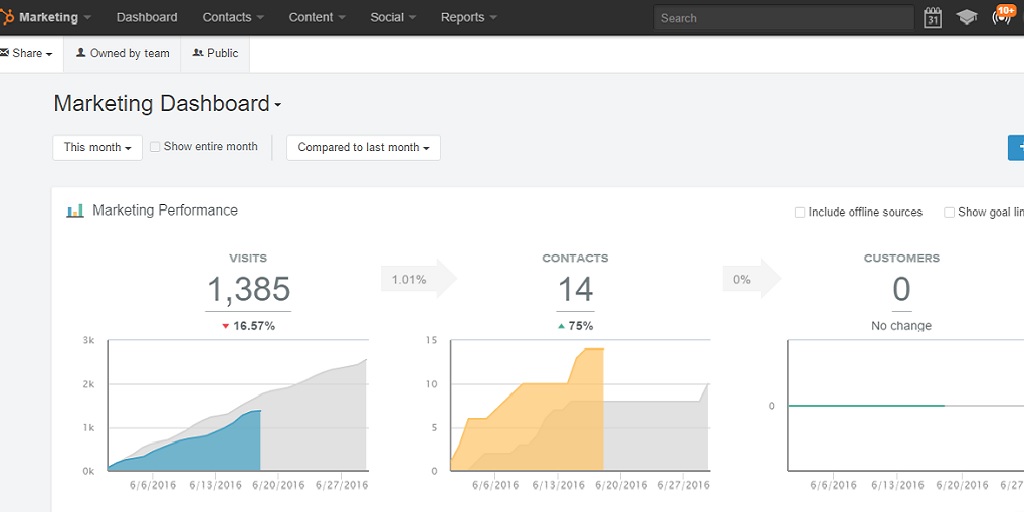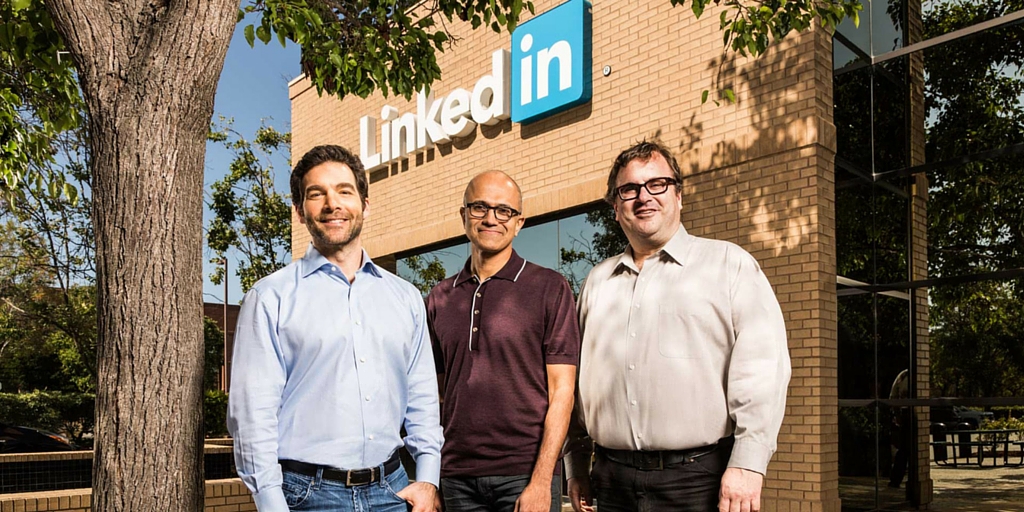
by Fronetics | Jun 23, 2016 | Blog, Content Marketing, Marketing, Strategy, Supply Chain

HubSpot users also saw 3x more leads and 4.1x web visitors per month after a year using the software.
A study has found that using HubSpot for your inbound marketing can increase sales revenue by 72% in 12 months.
A 2016 MIT Sloan student analysis showed that HubSpot’s inbound marketing software provides users a substantial boost in quality leads, which converted into more sales. In year two of using the software, customers continued to see impressive increases.
The in-depth report was a compilation of customer survey responses and web data gathered over a 24-month period for HubSpot users from 2013 to 2015. It looked at three fundamental aspects of marketing methodology:
- Attracting new visitors to the user’s website
- Conversion of these visitors into customer leads
- Closing those leads into actual sales
Leveraging tools to streamline and magnify marketing and sales efforts is important for all businesses in the supply chain and logistics industries, but it can be especially important if your business is small, or has limited resources. HubSpot proved to be a competitive solution, with cost-effective results that increased leads, customers, and revenue.
Report highlights
Attracting new customers
- Users averaged 3x more leads per month after a year.
- Websites averaged 4.1x more visitors per month after a year.
Conversion of website visitors into leads
- Approximately 83% of the HubSpot customers experienced an increase in their conversion rate of leads into customers.
- Size of the business did not matter; all saw significant increases in site traffic and lead conversion rates.
Closing those leads into sales
- 72% of HubSpot customers saw an increase in sales revenue in one year.
Other findings focused on substantial support in meeting goals and the ease of attracting the right customer persona for optimum results.
- 96 % of customers surveyed said that HubSpot helped them meet their marketing goals.
- 68% of customer respondents felt that their efforts generated better quality leads while using HubSpot.
- Increased customer satisfaction was reported by 46% of HubSpot users since they began using the program.
Is HubSpot right for your business?
HubSpot is a marketing platform that takes all of the inbound marketing methods that were once separate services and consolidates them into one integrated software package. It provides marketing analytics, lead intelligence, A/B landing page testing, CRM integration, email service integration, eCommerce integration, and API integration.
From one location, you can blog, tweet, optimize, then capture and nurture leads. It drives the right customers to you using extensive research specific to your industry. It pinpoints your competitors and potential customers, including their typical pain points, interests, and questions.
A separate 12-month study conducted by Overgo involving both B2B and B2C businesses compared companies using HubSpot to those who did not. It found:
- An average increase of 170% in organic traffic after one year, whereas those using HubSpot saw an average organic traffic increase of 590%.
- HubSpot received 125% more (B2B) and 294% more (B2C) leads than companies not using HubSpot. (Several of the B2B companies received fewer leads because their targets are multi-million dollar deals, a much smaller avenue of opportunity.)
The difference was attributed to the tools HubSpot offers its customers, which include:
- Ranking opportunities – a feature that shows which keywords offer your business an opportunity to get ranked on the first page of search results.
- Conversion opportunities – shows which keywords are attracting a lot of traffic but not converting, then suggests ways to increase conversion.
- Long-tail opportunities – suggests keywords where ranking could improve substantially if you add a certain word or phrase.
- Competitors – compares your site’s ranking and search volume to your competitors.
- Campaigns – helps organize keywords into campaigns for tracking and measurement.
HubSpot’s inbound marketing software has consistently provided a relatively fast and high return on investment for the majority of B2B or B2C companies, no matter their size.
Related posts:

by Fronetics | Jun 21, 2016 | Blog, Content Marketing, Marketing, Social Media

Try these tips to attract potential customers to follow your business on LinkedIn.
This is part three of a three-part series on LinkedIn for B2B businesses. Check out part one, LinkedIn for B2B: Getting Started, and part two, How to Hire Talent through LinkedIn.
LinkedIn is a goldmine for organizations looking to build professional relationships and generate more quality leads. The 433+ million member base presents an enormous opportunity for your company to earn new business. But once you set up your company page, how can you start attracting those members to follow you? We’ve got 10 steps to get you started.
Keep in mind: Attracting followers can work like a domino effect — if you find the right people, that is. When you form an authentic LinkedIn relationship with someone, someone who is genuinely interested in your business and the content you distribute, that person is more likely to like, comment on, or share your updates. Then that person’s network will see that s/he engaged with your business. Not only does this provide exposure for your company, but also offers an endorsement of sorts. It encourages other people in your followers’ networks to follow you as well.
10 steps to attract LinkedIn followers
1) Entrust your colleagues.
Send around a company-wide email encouraging your employees to add your company to their LinkedIn profiles. When they do, your company name and logo show up on their profiles. Additionally, they automatically become followers of your company page and will receive your updates. If you can encourage them to like, share, and comment on your content, even better.
2) Tell your customers and partners.
Follow your customers and business partners on LinkedIn to prompt them to do the same for you. You can also let them know that you have a company page by including it in customer newsletters, your email signature, or other regular communications with them. Engage with their content on LinkedIn to stay top of mind and to get your business’ name in front of their followers as well.
3) Follow your competitors.
Get insight into what the competition is up to and how they are interacting with their followers. Make sure to like and comment on their content since their networks will see this activity (and, thus, your business’ name). You may even go further by following some of their customers and partners — you never know where a new business relationship might start!
4) Add a follow button to your website, social accounts, and content.
Don’t forget to add LinkedIn to your follow buttons on your website, blog, and other social media profiles. You can also add it to the share widgets on your content assets, like blog posts, emails, and landing pages. Doing so provides potential followers with an easy way to locate your company page or to share your content with their networks.
5) Write a blog post about it.
Announce the launch of your company page with a celebratory blog post. Enrich your post with keywords that resonate with your target audience, so potential customers searching the Internet might come across it and want to connect with you. Make sure to share the post through your other social media channels to encourage your followers there to find you on LinkedIn as well.
6) Join group discussions.
LinkedIn groups facilitate conversations about popular issues and hot topics in your industry. Though company pages cannot participate, individual employees partaking in the discussion represent their companies. (In fact, your company name is displayed under the employee’s name when they start a discussion.) Encourage your executives and other company leaders to find and join groups that relate to your business and to actively participate in dialogue. They can also share company updates or blog posts in these forums. Other group members will recognize their expertise and form a favorable opinion of the company — perhaps favorable enough to follow it.
7) Post regular content.
Keep yourself in your followers’ eyes by posting content at least several times a week. Keep in mind it doesn’t have to be all original content. In fact, it’s a smart idea to mix it up and share articles and posts by others that you find interesting. Users who come across your company page will recognize you as a source for frequent, relevant information, and will want to follow you to stay in the know.
8) Like, share, and comment on others’ content.
The more you interact with different members’ content, the more brand exposure you’ll get. Remember, the connections in members’ networks see details of your interaction in their newsfeeds. The more you interact with different people, the larger your reach.
9) Follow industry news and post on LinkedIn Pulse.
Keep up to date with the latest happenings and topics of conversation in your industry on LinkedIn Pulse. It’s a great way to gain inspiration for content. And posting to Pulse is an excellent way to attract followers. Millions of people browse and engage with Pulse conversations every day, so publishing can offer great exposure for your business.
10) Strategically utilize sponsored updates.
Your content can reach users outside of your company page’s followers and visitors through sponsored updates. The Campaign Manager tool will insert particular posts into a targeted audience’s LinkedIn newsfeeds. You just set your budget and choose cost-per-click or cost-per-1,000 impressions, and voilà! While few companies have the budgets for daily sponsored updates, these campaigns can be really effective at attracting followers when you have particularly compelling content to share.
Related posts:

by Fronetics | Jun 20, 2016 | Blog, Current Events, Marketing, Social Media, Strategy

Source: Microsoft
The $26.2-billion acquisition could result in the customer-targeting solution(s) B2B marketers have been waiting for.
Microsoft announced on June 13 that it would purchase LinkedIn for $26.2 billion, a deal set to close by the end of 2016. Though LinkedIn will operate “as a fully independent entity within Microsoft,” the union will strengthen their shared mission to “connect the world’s professionals to make them more productive and successful.”
Both Sadya Nadella and Jeff Weiner’s letters to their employees beam with excitement over the possibilities for product synergies. “Think about it: How people find jobs, build skills, sell, market and get work done and ultimately find success requires a connected professional world,” writes Nadella. “It requires a vibrant network that brings together a professional’s information in LinkedIn’s public network with the information in Office 365 and Dynamics.”
Obvious opportunity lies in enhancing Microsoft’s existing solutions to improve user experience. For example, videos from Lynda.com, a website for training videos that LinkedIn bought in 2015, could be accessible throughout the Office suite, such as an Excel document.
But for B2B marketers, the most exciting possibilities involve “new opportunities … for monetization through individual and organization subscriptions and targeted advertising,” as Nadella puts it.
New opportunities for monetization
Jenny Sussin, a Gartner research director, proposes that LinkedIn’s value to Microsoft lies in its algorithms and user data. Successful integration into Microsoft’s existing products could be a game-changer for the B2B sphere, in terms of targeting customers.
First let’s consider the algorithms, two of which Sussin claims were the main attraction for Microsoft. “No. 1 was the algorithm that creates the connection graph, the social networking graph,” she says. “No. 2 was the algorithm that determines the information most valuable and most actionable to you.” Essentially, with this acquisition, Microsoft has the ability to map how professionals are connected and determine what content is most relevant to each individual user.
Secondly, LinkedIn has the most comprehensive, up-to-date personal data about its 433+ million global users of any professional network. And that data has not been available to other companies — LinkedIn even refused access to Google for ad sales — until now. The value of this information to any B2B organization is indisputable.
Now consider that there are 1.2 billion users of Office and 4.4 million users of Dynamics CRM. Microsoft can now combine the information it knows about those professionals with LinkedIn’s user data, map their relationships, and offer customized content within these products. Imagine being able to reach your target customer within the very tools s/he uses most every day.
And those are just two of Microsoft’s products. Skype, Yammer, MSN: there is no shortage of targeted advertising opportunities.
Taking on Google?
Perhaps the most exciting of these secondary properties for B2B marketers is Bing, Microsoft’s search engine. Bing Ads are attractive to marketers because of the low cost per conversion. The problem, of course, is volume, as Google dominates the market share.
But with LinkedIn’s data and algorithms, Bing could become “what search is sorely lacking today for B2B targeting,” says Marketing Mojo CEO Janet Driscoll Miller.
“Search marketing is great for determining intent — for understanding what a person wants,” Miller explains. “But social media platforms, like LinkedIn, tell us who the person is. Marrying the two pieces of data — who and what — brings us to the sweet spot of marketing and targeting an ideal audience. LinkedIn provides us with demographic targeting based on business and professional user information.”
Targeting could include factors like company size (e.g., spending capabilities), so marketers would not waste impression dollars advertising products that are far beyond the buyer’s price point. Fold in other LinkedIn solutions, like Lead Accelerator, to improve retargeting, and Bing Ads could really compete.
Google may have a leg up in terms of search volume, but without detailed data on users’ professional demographics, Bing could corner the market as the most effective B2B ad targeting platform.
Cause for caution
While the marriage of LinkedIn and Microsoft’s capabilities shows great promise, hold off on celebrating just yet.
Part of LinkedIn’s value to Microsoft derives from user-provided information. And part of Microsoft’s value to B2B marketers lies in its products’ ubiquity. But what if people stopped contributing their personal details to LinkedIn because of the way it was being used across the Microsoft suite? And what if businesses stopped using Microsoft products over privacy or data security concerns?
Here’s why those are both real concerns: Nadella suggests that your LinkedIn newsfeed could show relevant articles based on the projects you’re working on offline. Taking information from my desktop?! That’s problematic from both a personal and proprietary standpoint. Issues around invasion of privacy and the breech of secure business information could present major roadblocks to success.
How would you feel if a software product you researched yesterday appeared in your Outlook today? If, while preparing a PowerPoint for a client meeting, a pop-up suggested you contact a connection in your LinkedIn network who is an expert on the topic? With the deal projected to close before the end of the year, users reactions to these concerns over the next few months could be telling.
Related posts:

by Fronetics | Jun 15, 2016 | Blog, Marketing, Strategy

B2B organizations are leveraging review sites to increase organic traffic and conversion rates. Here’s how.
Consumers regularly turn to review sites to research products and services before they buy. But did you know that businesses can leverage this behavior to increase organic traffic and drive conversions?
B2B organizations are joining third-party review sites precisely for benefits like these. In fact, such memberships are becoming an integral part of some marketing strategies.
Let’s take a look at it works.
Review sites inform buying decisions
Buyers value the opinions of peers and colleagues. In fact, B2B buyers rank it among their top three resources for information about solutions, along with experts and web searches.
It makes sense: User reviews offer an unbiased, credible experience regarding a company’s product or services, so potential customers do not have to rely exclusively on information the organization provides. What’s more, reviewers often share more than just opinions; they frequently include related tips or good-to-knows, which offer extra value for the reader.
Experts equate review sites to short-form versions of case studies, which 83% of B2B buyers report as important when comparing vendors. Reviews offer real-life experiences with the product or service, but are much quicker to read and easy to consume in aggregate than case studies. They are also written from a buyer’s perspective, which resonates much more than, say, technical language and specifications.
Value for businesses
More succinct than a case study and just as credible, user reviews offer compelling testimonials that can attract customers at any point in the buying cycle. Here are a few ways organizations can leverage them to their advantage.
1) Use them as content.
Reviews make excellent lead-nurturing content. A business could share a positive review on social media or integrate it into a blog post. Negative reviews, too, give an organization a chance to address questions or concerns through content. Either way, reviews give insight into what customers are talking about, and this can help inform your content strategy.
2) Build brand awareness.
As more buyers turn to review sites to research products, companies who are members of the review site benefit from having their name in the mix. Even if a potential customer is researching a competitor, that person will likely come across your business name in comparison. That kind of exposure is invaluable as buyers are actively creating their vendor short lists — especially if you have very positive reviews.
3) Build customer trust.
Participating on a business-review site promotes the transparency customers crave. It tells them you are willing to let your customers share the bad as well as the good for all to see. Additionally, positive reviews can boost an organization’s Google seller rating, which appears next to the business name in AdWords ads. The seller rating gives readers insight into how the business rates for quality service before that person ever visits the website and, if the rating is high, establishes instant credibility. And more credibility equals more click-throughs.
4) Increase organic traffic.
Search engines favor reviews, meaning search engine algorithms increase the search ranking of sellers who have favorable ratings on review sites. Consider that 60% of organic clicks go to the top three search results, and that the vast majority of readers won’t search beyond the first page of results. Any boost from positive reviews can increase your organic traffic potential.
5) Drive conversions.
Many organizations are finding reviews enormous valuable for their business in the late stages of the buyer’s journey. Password-management startup Dashlane, for example, reported a 14.5% increase in conversion rates when reviews were added to paid ad landing pages. Because reviews hold such credibility and resonate so strongly with customers, they make for excellent closing content.
Here are a few B2B review platforms to consider joining as part of your marketing strategy.
- G2 Crowd: Offers online reviews on B2B marketing services as well as business software.
- GetApp: Allows users to search for industry topics as well as specific products.
- IT Central Station: Described as a “Yelp or TripAdvisor for enterprise technology.”
- TechnologyAdvice: Allows users to perform side-by-side comparisons of solutions within a particular category.
- Trustpilot: A community where users can interact with one another regarding particular solutions they use.
- TrustRadius: Authenticates each reviewer and validates every review through its research team prior to publishing.
Related posts:

by Fronetics | Jun 14, 2016 | Blog, Content Marketing, Logistics, Marketing, Supply Chain
Try writing about these topics on your supply chain blog to engage customers.
Content is an important part of many logistics and supply chain companies’ marketing plans. Yet nearly half (45%) say creating quality content on a consistent basis is their biggest challenge.
If your business is part of the 90% that produces some or all content in-house, you have likely struggled with this from time to time. You know that you shouldn’t pitch your products. But, then, what are you supposed to say on your blog?
Here are some thoughts on what to write about:
1) Offer something of value.
Do you have expert advice on a particular topic? Is there something about your products or your people that would be entertaining to your audience? Do you have access to top-of-their-field specialists that could discuss a particular issue?
2) Share your mission.
What is your company’s mission statement? Pick one aspect and describe why this is important to you/society, or illustrate how your company is living up to it. For example, a green transportation company might create an infographic about the industry’s impact on the environment.
3) Tell a story.
What anecdotes can you share about your business? Are their employees with exceptional stories to share? Customers whose narrative bears repeating? What stories illustrate something about your business? For example, Southwest Airlines’ Nuts About Southwest blog regularly shares customer stories — tugging at the heartstrings with nearly missed births, marriage proposals, and, of course, adorable animals — that illustrate the airline’s commitment to customer service and on-time arrivals.
Related posts:






